You start looking into magnolias with their glorious, signature fragrant flowers and dramatic foliage. Soon, you'll want one for every nook in the yard. Some magnolias are grown primarily for their large showy flowers, usually in the form of a shrub or small tree. Others grow into large shade trees, and yet others are used as evergreen shrubs, trees or hedges. Each is very easy care, resistant to many diseases and pests, and beloved by migrating birds. Also, depending on the variety, tolerant of harsh Southern summers and cold Northern winters.
How to decide which is right for you? First, work back from size of your site to decide the right mature size variety. Then decide how you need the magnolia to perform ( as a large shrub, accent tree, shade tree, windbreak, evergreen, etc.). After that, it’s about selecting the one whose flowers steal your heart. Varieties shown will be available between now and next spring; check with your local garden center or shopmonrovia.com.
Shown: Galaxy Magnolia
Common Types of Magnolia:
Star: Very cold hardy (USDA Zones 4-8). Slow growing, broad spreading, small trees or large shrubs that bloom with abandon even when very young.
Saucer: Deciduous trees known for spectacular flowers appearing in late winter and early spring. Can range from large shrub to 70 ft. tall tree.
Southern: Shiny green top/brown fuzzy underside leaves are its calling card along with huge fragrant flowers. Size ranges from small to large evergreen trees.
Smaller Sized Specimens (under 20 ft. tall)
The smaller size and often more compact habit of these magnolias means they can do alot. Try dressing up very large containers, framing front entries, or being the centerpiece of a large shrub bed. If you need a smaller tree for the front yard, here’s a good place to start.
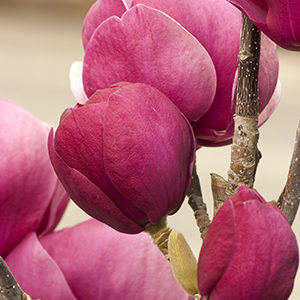
Black Tulip™ Magnolia
Dark burgundy-red blooms appear before the foliage in early spring.
About: Full sun. Reaches up to 20 ft. tall and 10 ft. wide. Deciduous. (Zone: 5 – 9)
Use: Specimen tree, container, massed as a hedge.
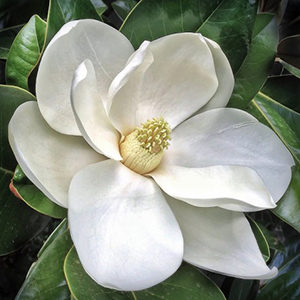
Teddy Bear® Southern Magnolia
Compact, upright grower with fragrant flowers.
About: Full sun. Reaches up to 20 ft. tall and 12 ft. wide. Evergreen. (Zone: 7 – 9)
Use: Large shrub or small tree.
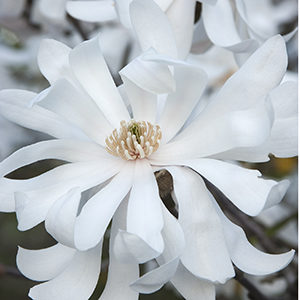
Royal Star Magnolia
Early bloomer with large, fragrant flowers before spring foliage.
About: Full sun. Reaches up to 15 ft. tall and 12 ft. wide.Deciduous. (Zone: 4 – 9)
Use: Moonlight or white garden.
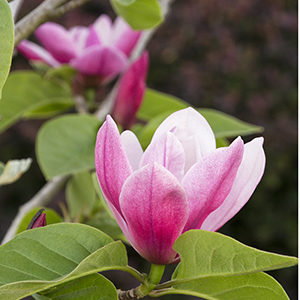
Rose Marie Magnolia
Hybrid valued for its prolific, very late, long blooming habit.
About: Partial shade to full sun. Reaches up to 12 ft. tall and 8 ft. wide. Deciduous. (Zone: 5 – 9)
Use: Large container, side yard, on axis with window
Medium Sized Specimens (20 - 30 ft. tall)
Sometimes you need some height and scale in the yard, or want a dense but elegant screen from the neighbors. These magnolia trees will fit the bill. Just decide if you want the classic Southern magnolia look of large flowers and green and brown leaves. Or, something with a bit more of a color story.
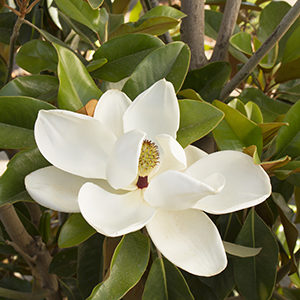
Saint Mary Southern Magnolia
Compact form creates a dense, pyramidal shape.
About: Full sun. Reaches up to 25 ft. tall and wide. Evergren. (Zone: 7 – 9)
Use: Small standard or side yard as a screen.
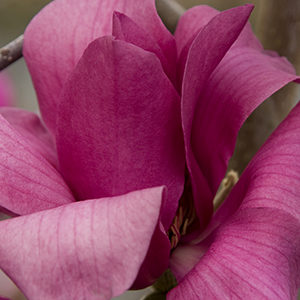
Vulcan Magnolia
Brilliant magenta blooms on an erect, open branched form; becomes rounded with age.
About: Full sun. Reaches up to 25 ft. tall and 15 ft. wide. Deciduous. (Zone: 5 – 9)
Use: Dress up side-yards or mark gates and entries.
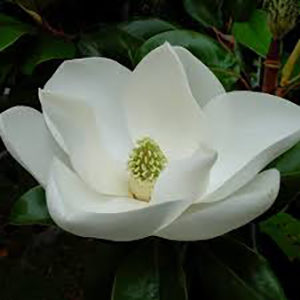
Little Gem Dwarf Southern Magnolia
Compact, narrow form and large fragrant blooms.
About: Full sun. Reaches up to 25 ft. tall and 15 ft. wide. Evergreen. (Zone: 7 – 9)
Use: Accent tree, espalier.
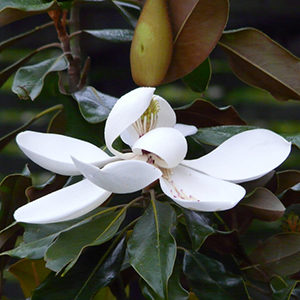
Kay Parris Magnolia
Glossy leaves with orange-brown fuzzy undersides and long flowering fragrant blooms.
About: Full sun. Reaches up to 20 ft. tall and 10 ft. wide. Evergreen. (Zone: 6 – 9)
Use: Ideal for a front lawn.
Large Sized Specimens (over 30 ft. tall)
If you have room and want BIG drama, these large, tall, wide varieties do the job when they reach maturity. They take up space and cast a wide pool of shade in a yard─conditions that can limit other planting choices. However, you're planting a "heritage" tree that's truly unforgettable, and a legacy in the making.
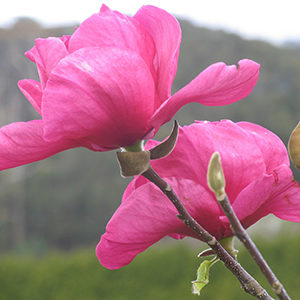
Felix Jury Magnolia
As many as 100 highly fragrant hot pink flowers blooms on mature trees.
About: Full sun. Reaches up to 40 ft. tall and 15 ft. wide. Deciduous. (Zone: 5 – 9)
Use: Large specimen, accent in a large planting.
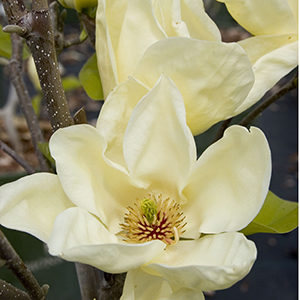
Elizabeth Magnolia
Rare yellow-flowers on an upright pyramidal grower.
About: Full sun. Reaches up to 30 ft. tall and 15 ft. wide. Deciduous. (Zone: 4 – 8)
Use: Offers color and limited shade in a small city yard.
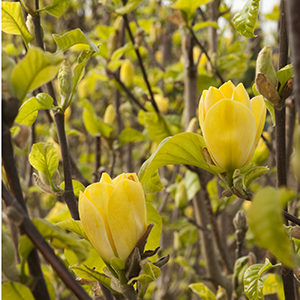
Yellow Bird Magnolia
Bright canary yellow flowers emerge with the foliage late in the spring.
About: Full sun. Reaches up to 40 ft. tall and 25 ft. wide. Deciduous. (Zone: 5 – 9)
Use: Jaw-dropping specimen.
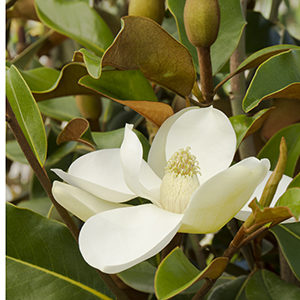
Bracken’s Brown Beauty Magnolia
Classic lustrous foliage and large fragrant blooms.
About: Full Sun. Reaches up to 50 ft. tall and 30 ft. wide. Evergreen. (Zone: 5 – 9)
Use: Large shade tree.
Make Magnolia Happy
Magnolias are happy in almost any climate, especially if you can provide protection from harsh conditions.
- Prefer full sun to light shade; in particularly warm or dry climates, trees benefit from afternoon shade.
- Avoid exposed, windy locations as strong winds can damage large flowers and the typically brittle branches.
- Adaptable, but prefer moist, well-drained, slightly acid soils.
- Well-established plants can be moderately drought tolerant.
- Mulch and provide regular irrigation during warm or dry weather for the first 6 to 12 months after planting.
